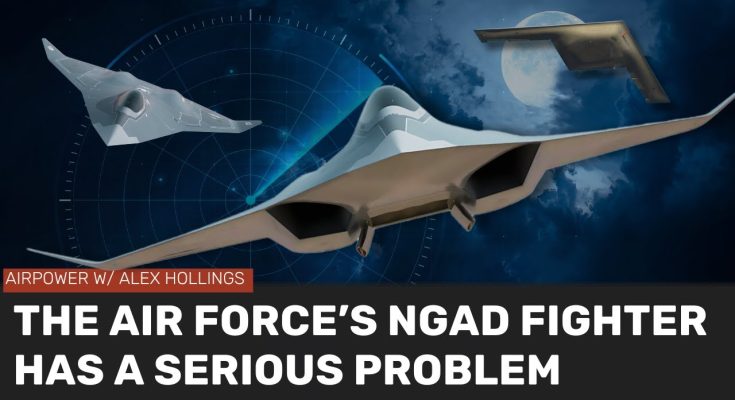The Air Force’s Next Generation Air Dominance (NGAD) fighter is a pivotal program aimed at maintaining American air superiority in the coming decades. It is being developed to counter emerging threats posed by increasingly advanced adversaries like China and Russia, who are rapidly advancing their own military technologies. However, the NGAD fighter faces a number of critical challenges that could hinder its success, both in terms of technological advancements and operational integration.
1. Technological Challenges and Innovation
The biggest hurdle NGAD must overcome is technological development. NGAD is being designed to be highly advanced, incorporating cutting-edge capabilities such as artificial intelligence (AI), next-gen stealth, advanced avionics, and potentially even hypersonic weapons or systems. The Air Force aims to create a fighter that can outperform current and future adversaries while maintaining a high level of survivability and flexibility in combat scenarios. However, the technologies required to achieve these ambitious goals are still in their nascent stages.
For example, integrating AI into the NGAD’s systems is a double-edged sword. While AI can significantly enhance decision-making, speed, and operational efficiency, it also brings risks. The reliability and security of AI-driven systems are critical concerns, as any malfunction or vulnerability could compromise the mission or even result in catastrophic failure.
Similarly, advanced stealth capabilities, which are critical for survivability in contested airspaces, must evolve beyond the capabilities of existing platforms like the F-22 and F-35. Ensuring that the NGAD can remain stealthy against next-generation radar and detection systems is crucial, but this is a difficult task given the rapidly evolving nature of sensor technology and countermeasures.
2. Cost and Budget Constraints
Another pressing issue is cost. The Air Force has a long history of grappling with cost overruns and delays in major programs, with the F-35 being a prime example. The development of NGAD is expected to be extremely expensive, and there are concerns about the program’s affordability in an era of budget constraints. Given that the U.S. military must balance the development of multiple advanced platforms, including new bombers, drones, and hypersonic weapons, there is pressure to avoid repeating the financial burden seen in other high-profile programs.
This could lead to difficult trade-offs, such as scaling back the number of units produced or limiting the scope of advanced features to stay within budget. Such decisions could compromise the fighter’s operational capabilities or force the Air Force to prioritize certain functionalities over others.
3. Operational Integration with Legacy Systems
While the NGAD is designed to be a future-focused fighter, the Air Force cannot afford to replace its existing fleet of fighters and support systems overnight. Integrating NGAD into a broader combat and defense architecture that includes current platforms like the F-22, F-35, and the new B-21 bomber presents another set of challenges.
One challenge is interoperability. NGAD needs to seamlessly communicate and work with legacy aircraft, ground systems, and other platforms in joint operations. Additionally, training pilots, maintenance crews, and other personnel on a new and highly complex aircraft will require substantial resources and time. If the NGAD is not operationally compatible with existing systems, the Air Force may face issues with readiness, operational efficiency, and overall effectiveness in real-world combat.
4. Strategic and Tactical Adaptation
Lastly, the strategic environment in which the NGAD is designed to operate is constantly evolving. Potential adversaries, like China and Russia, are rapidly developing their own advanced air forces, which could counter or neutralize the advantages that the NGAD fighter might offer. This could include developing effective anti-aircraft systems, next-gen missiles, or even counter-stealth technologies that limit the NGAD’s edge in battle.
The NGAD’s ability to adapt to new types of warfare—such as cyber warfare, electronic warfare, and multi-domain operations—will be essential for its long-term success. It must be flexible enough to adjust tactics and technologies in response to changing threats, ensuring that it remains relevant over its decades-long service life.
In conclusion, while the NGAD fighter represents a bold leap forward in air combat technology, it faces significant challenges. From developing the required advanced technologies, managing cost constraints, ensuring operational compatibility, to adapting to shifting global threats, the Air Force must navigate a complex landscape to successfully deploy a fighter that maintains American air dominance for the future.



